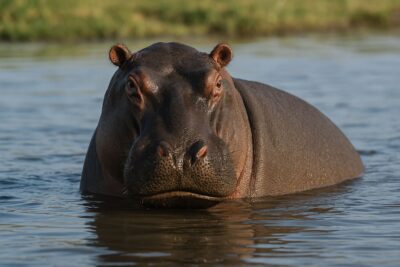 At first glance, hippos look like sluggish, chubby animals lazily floating through African rivers. But don’t let that fool you, the hippopotamus is considered one of the most dangerous animals on the continent. At Vero Q&A, we uncover surprising truths behind this herbivorous heavyweight.
At first glance, hippos look like sluggish, chubby animals lazily floating through African rivers. But don’t let that fool you, the hippopotamus is considered one of the most dangerous animals on the continent. At Vero Q&A, we uncover surprising truths behind this herbivorous heavyweight.
Understanding the Hippo’s Biology
Despite being strict herbivores, hippos can weigh over 3,000 pounds and reach lengths of up to 16 feet. They have massive jaws that can open nearly 180 degrees and generate a bite force capable of crushing bones. Their tusks, which are actually elongated canine teeth, grow continuously and can reach up to 20 inches.
Territorial and Highly Aggressive
Hippos are extremely territorial when in water. Males will violently protect their stretch of river, often charging at anything that comes too close boats, other animals, even humans. These attacks are swift, aggressive, and deadly. Hippos can flip small boats and bite with fatal precision.
Speed and Agility: A Deadly Surprise
It’s easy to assume that such large creatures would be slow, but hippos are incredibly agile. On land, they can run up to 30 km/h (19 mph). In water, they move by pushing off the riverbed, gliding with surprising speed. This makes escaping from a charging hippo nearly impossible, whether you’re in a boat or on foot.
More Human Deaths Than Lions
It may shock many to learn that hippos cause more human fatalities in Africa than lions or any other large predator. According to estimates, they kill around 500 people per year. Most attacks occur when people unknowingly enter hippo territory or get between a mother and her calf.
Why So Hostile?
Unlike predators that attack for food, hippos attack out of instinct, fear, or aggression. Males protect their territory, while females protect their calves. Their short temper and tendency to charge without warning make them especially unpredictable.
Nighttime Grazers, Daytime Floaters
Hippos spend their days submerged to stay cool and their nights grazing on grass. While they’re peaceful feeders, their journeys can lead them near human settlements, increasing the risk of conflict especially if they feel threatened.
Hippos and Ecosystems
Despite their aggression, hippos play a vital ecological role. Their dung fertilizes aquatic ecosystems and their movement shapes riverbeds. Protecting them is important, but it requires understanding and respecting their space.
Hippos are a true paradox plant-eaters that are feared more than carnivores. Their danger lies in their size, speed, territorial behavior, and unpredictability. At Vero Q&A, we highlight such unique facts to help people appreciate and respect the wildlife that shares our planet.
1. Do hippos eat meat?
No, hippos are herbivores. However, they are highly aggressive and dangerous despite not being predators.
2. How fast can hippos run?
Hippos can run up to 30 km/h (19 mph) on land for short bursts.
3. Why do hippos attack humans?
They attack when they feel their territory or young are threatened. They’re very protective and unpredictable.
4. Are hippos more dangerous than crocodiles?
Yes, statistically, hippos kill more people in Africa each year than crocodiles.
5. Can hippos swim?
Not really. Hippos don’t swim they walk or bound along riverbeds.
6. What should you do if you see a hippo?
Stay far away. Never get between a hippo and water or its calf, and avoid boating near them.